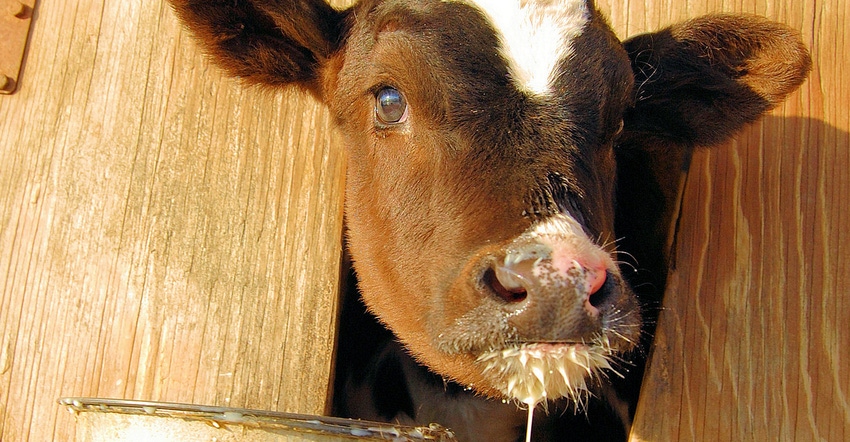
Sure, you pasteurize waste milk before feeding it to dairy calves. But a new national study involving 618 dairy herds shows that much post-pasteurized waste milk suffers from low fat, low protein and high bacterial levels — and variable quality, at best.
The study included batch and high temperature short time pasteurizers plus ultraviolet milk treatment. Milk samples at each farm were collected for seven consecutive days to determine total solids, protein, butterfat, somatic cell count, antibiotic presence and bacterial count.
“Many farms have a readily available supply of waste milk and want to feed it to their calves,” says Tom Earleywine, director of nutritional services at Land O’Lakes Animal Milk Products. “But even if you pasteurize waste milk, it may not provide consistent nutrition for calves.” (Disclaimer: LOL Animal Milk Products markets milk replacer.)
Wide nutrient variability
Milk solids, protein and fat percentages can change day to day and even from feeding to feeding, Earleywine says, when milk is mixed from cows in different lactation stages and health statuses. Total solids in pasteurized waste milk can vary as much as 6.58% on individual farms, with protein variations of 7.9% and fat variations of 17.3%. To put it another way:
• Total solids ranged from 18.1% down to 7.67%, with a mean average of 12.8%.
• Protein ranged from 4.96% to 2.13%, with a mean of 3.41%.
• Fat ranged from 9.47% down to only 1.55%, with a mean of 3.92%.
41% failed bacterial count
Pasteurizing waste milk is essential to reducing bacteria, Earleywine says. But this study discovered that
41% of pasteurizers failed to kill the necessary amount of bacteria when tested immediately after pasteurizing. It was even higher on samples tested after the last calf was fed.
Bacteria counts post-pasteurization were categorized as failed (greater than 100,000 colony-forming units of total bacteria per milliliter); poor (20,001 to 100,000 CFU per ml.); and good (less than 20,000 CFU per ml.). Here’s how they stacked up:
• More than 27% of farms failed; 14% rated poor; 58% scored good.
• In terms of last calf fed, 36% failed; 18% rated poor; 46% scored good.
• More than 37% of high temperature short time pasteurizers had bacterial levels greater than 20,000 CFU.
• More than 37% of batch pasteurizers exceeded 20,000 CFU.
• Nearly 47% of UV treatments exceeded that bacterial count.
Antibiotic concerns
Feeding antibiotics to calves may be a necessity. But rising concern about antibiotics in waste milk also has given some dairy producers pause when deciding whether to feed pasteurized waste milk, Earleywine claims.
Some 56.8% of milk samples in this study contained traces of antibiotics. Many factors impact antibiotic resistance in calves. But, Earleywine says, research confirms an increase in antibiotic resistance in calves fed waste milk compared to calves fed milk replacer.
Your bottom line is…
It’s important to handle waste milk using the same methods recommended for saleable milk, Earleywine says. That includes cooling milk to no higher than 40 degrees F within an hour of milking.
Pasteurizers must also be properly cleaned after each use. It’s also critical to properly sanitize any feeding equipment, such as bottles and buckets.
About the Author(s)
You May Also Like




